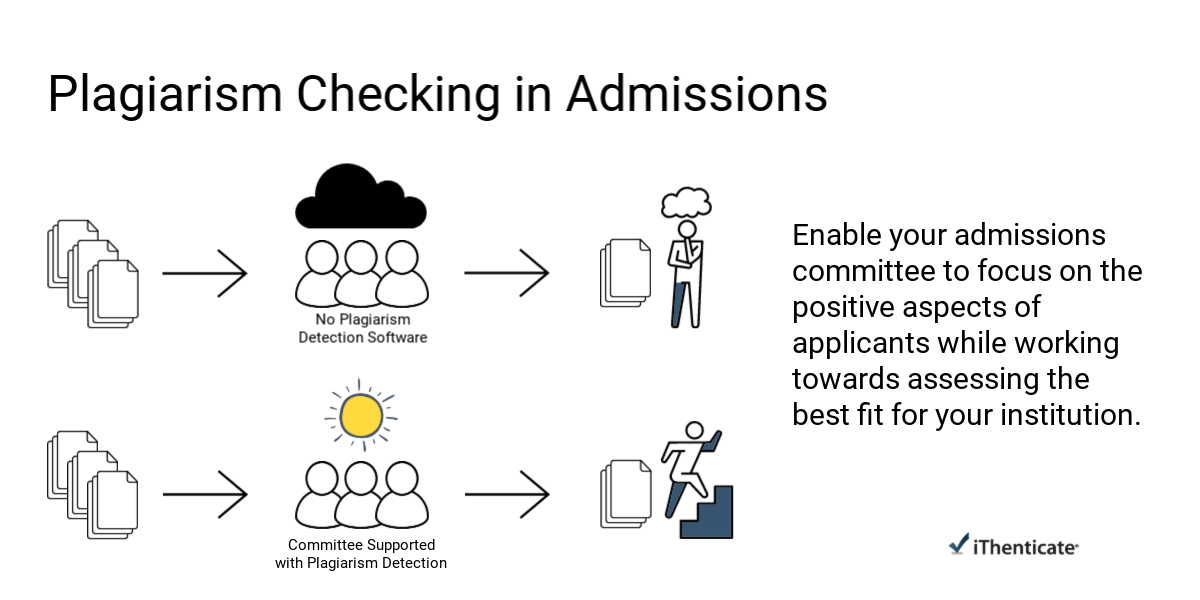The admissions process is a high stakes process for admissions committees. Each applicant contributes the potential to build on a continuing legacy, to add value to a campus community, to uphold the institution’s academic reputation, and to support diversity, among other initiatives.
Admissions must look for the best potential in each application. It means the weight of sorting out whether or not an application is plagiarized, should be off of the shoulders of an admissions committee and be achieved by software like iThenticate.
So what can checking for plagiarism during the admissions process do for you? And what should you look for in a plagiarism detector?

Free up your resources to screen applicants for other qualities. The most effective plagiarism detector should have a large database against which to check text for similarity. The content-database ought to include journals and articles, dissertations, and theses in addition to crawled web pages. A plagiarism detector should be as thorough and comprehensive as possible, and a content database is the most significant indicator of such.
2. Plagiarism checking in admissions should fit into your existing workflow.Your plagiarism detector should have a flexible folder-based workflow that makes it easy to break up incoming documents between admissions officers, store results in a centrally accessible location, and collaborate together throughout the screening and review process. The best solution will allow committees to upload batches of documents and run reports on them automatically to keep up with incoming demand with very little work or disruption to your process.
3. Plagiarism checking in admissions should be flexible.You may also want software that can compare one application’s text against other applications in your specific pool for more in-depth checks against targeted files. For example, iThenticate’s doc-to-doc tool allows you to work within your own applicant pool to address collusion.
4. Plagiarism checking in admissions will enable making admissions decisions above the cloud of suspicion.Allow your admissions officers to be free from bias by providing a quantitative metric to one of the most subjective components of the admissions process. Enable your admissions committee to focus on the positive aspects of applicants while working towards assessing the best fit for your institution. In other words, while individuals can catch plagiarism, you don’t want your admissions team to be looking for cheating, because that’s the opposite of the mindset they ought to have while making admissions decisions.
5. Plagiarism checking in admissions will make known and uphold your program’s academic integrity honor code.By stating the use of plagiarism detection software in your admissions process, you make clear that integrity is a part of your institution’s culture. By normalizing academic integrity, you also ensure your institution’s academic reputation from the starting point of admissions.
6. Plagiarism checking in admissions will ensure confidence in your admissions decisions and uphold your institution’s reputation.Past behavior is the best predictor of future behavior. By checking for plagiarism in your admissions process, you make sure your selected applicants have a history of integrity and the best potential to uphold academic integrity and honesty throughout their time on campus and beyond as alums.
We believe that ensuring integrity in your admissions process with plagiarism checking will ultimately protect your academic reputation. And we also believe that it will attract applicants who hold the same values of honesty and originality. And in the end, that is the fit for which we all search.





